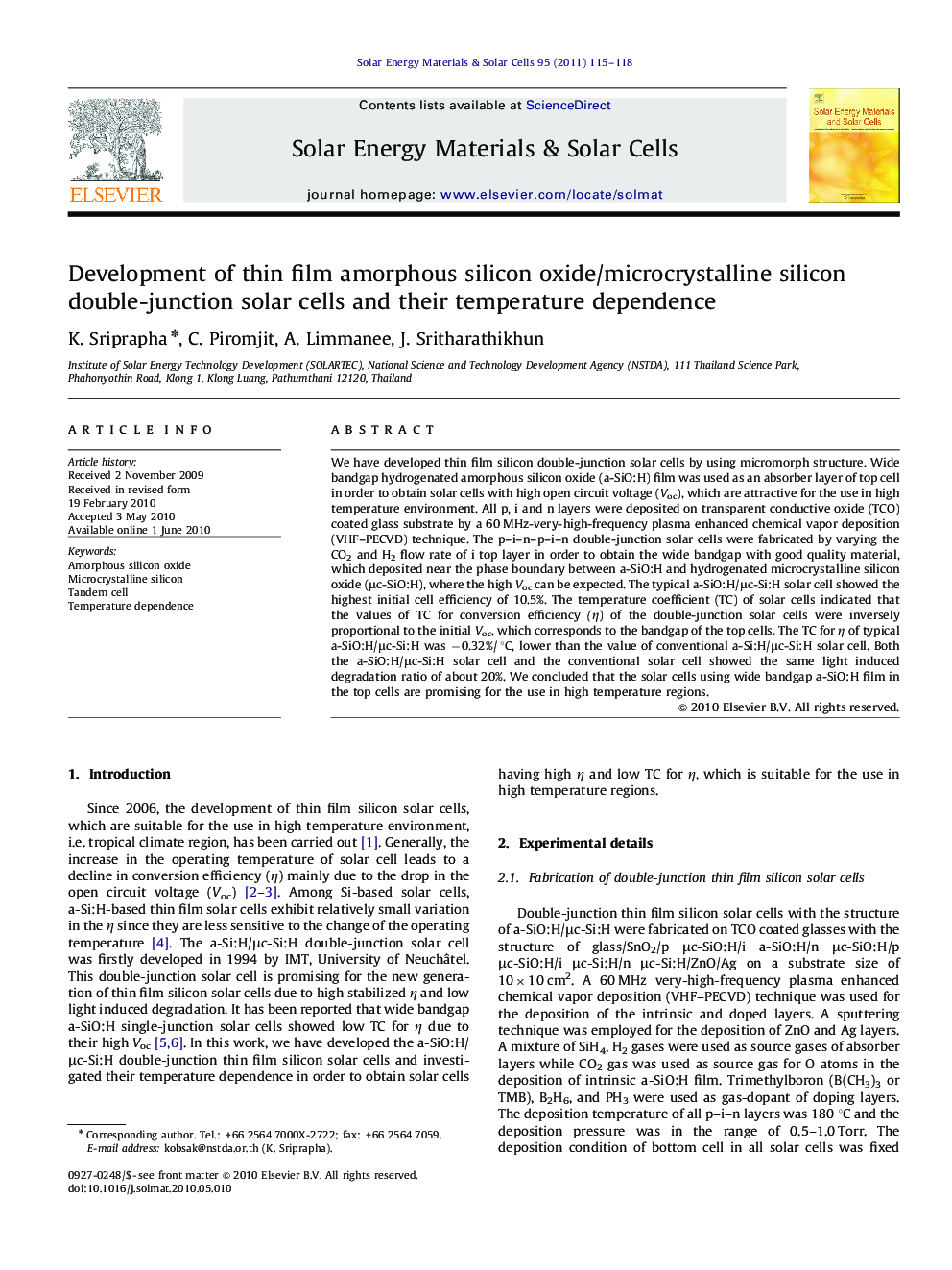| Article ID | Journal | Published Year | Pages | File Type |
|---|---|---|---|---|
| 79129 | Solar Energy Materials and Solar Cells | 2011 | 4 Pages |
We have developed thin film silicon double-junction solar cells by using micromorph structure. Wide bandgap hydrogenated amorphous silicon oxide (a-SiO:H) film was used as an absorber layer of top cell in order to obtain solar cells with high open circuit voltage (Voc), which are attractive for the use in high temperature environment. All p, i and n layers were deposited on transparent conductive oxide (TCO) coated glass substrate by a 60 MHz-very-high-frequency plasma enhanced chemical vapor deposition (VHF–PECVD) technique. The p–i–n–p–i–n double-junction solar cells were fabricated by varying the CO2 and H2 flow rate of i top layer in order to obtain the wide bandgap with good quality material, which deposited near the phase boundary between a-SiO:H and hydrogenated microcrystalline silicon oxide (μc-SiO:H), where the high Voc can be expected. The typical a-SiO:H/μc-Si:H solar cell showed the highest initial cell efficiency of 10.5%. The temperature coefficient (TC) of solar cells indicated that the values of TC for conversion efficiency (η) of the double-junction solar cells were inversely proportional to the initial Voc, which corresponds to the bandgap of the top cells. The TC for η of typical a-SiO:H/μc-Si:H was −0.32%/ °C, lower than the value of conventional a-Si:H/μc-Si:H solar cell. Both the a-SiO:H/μc-Si:H solar cell and the conventional solar cell showed the same light induced degradation ratio of about 20%. We concluded that the solar cells using wide bandgap a-SiO:H film in the top cells are promising for the use in high temperature regions.
